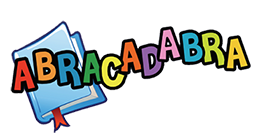Activities: Sounds, Letters, and Words (Alphabetics)
Matching Sounds
Overview
Objective
The student will identify sounds that are the same.
Facilitation Tips
In this activity, students can take turns matching a set of sounds. As there are only two sounds to match per set, it won’t take too long per turn.
Levels
Level 1: Distinguishable sounds.
Level 2: Similar sounds.
Activity Insights
What is Matching Sounds?
Auditory discrimination is the ability to perceive nonspeech sounds (including environmental sounds). Auditory discrimination is one of the precursors to solid phonemic awareness. Therefore, you should ensure that students can discriminate between sounds.
Why do students struggle with Matching Sounds?
If the student is not consistently matching sounds, first verify the amount of time the student has spent on the activity to determine whether she or he is spending enough time listening to the sounds.
How do I further support students?
First, make sure the student has spent adequate time on the activity. Also consider having the student attempt a lower level. You may want to sit with the student while she or he attempts the activity. Alternatively devise short listening activities to further develop sound discrimination.
Linked Stories
This is a story-independent activity.
Related Activities
Rhyme Matching
Same Phoneme
Same Word
Word Changing
Word Families
Resources
This activity does not currently have any additional resources.
Activities: Sounds, Letters, and Words (Alphabetics)
Matching Sounds
Objective
The student will identify sounds that are the same.
Facilitation Tips
In this activity, students can take turns matching a set of sounds. As there are only two sounds to match per set, it won’t take too long per turn.
Levels
Level 1: Distinguishable sounds.
Level 2: Similar sounds.
Insights
What is Matching Sounds?
Auditory discrimination is the ability to perceive nonspeech sounds (including environmental sounds). Auditory discrimination is one of the precursors to solid phonemic awareness. Therefore, you should ensure that students can discriminate between sounds.
Why do students struggle with Matching Sounds?
If the student is not consistently matching sounds, first verify the amount of time the student has spent on the activity to determine whether she or he is spending enough time listening to the sounds.
How do I further support students?
First, make sure the student has spent adequate time on the activity. Also consider having the student attempt a lower level. You may want to sit with the student while she or he attempts the activity. Alternatively devise short listening activities to further develop sound discrimination.
Linked Stories
This is a story-independent activity.
Related Activities
If you notice your student struggling with this activity, suggest one of the following activities to further practice and reinforce the skill.
Rhyme Matching
Same Phoneme
Same Word
Word Changing
Word Families
Resources
This activity does not currently have any additional resources.

